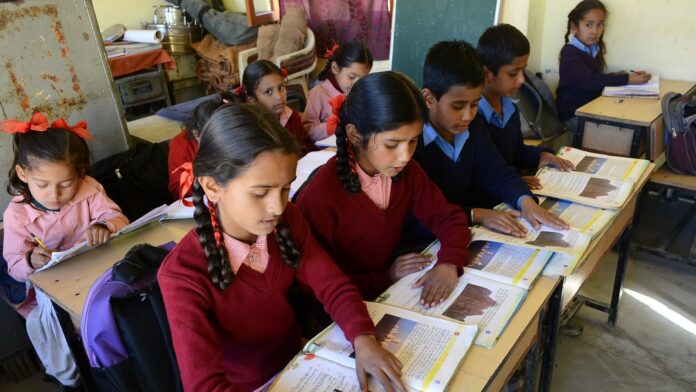The surge in government school enrolment witnessed during the Covid-19 pandemic seems to have reversed. The proportion of children aged 6-14 years enrolled in government schools is nearly back to the 2018 levels, PTI quoted the Annual Status of Education Report (ASER), which was released on Tuesday.

According to the report, not only there has been a complete recovery from the pandemic-induced learning loss, the learning levels in the primary grades are higher than past levels in some case.
More than 82 per cent children in the 14-16 age group know how to use a smartphone. But only 57 per cent use it for educational purposes.
“The increase in government school enrolment seen during the COVID-19 years seems to have reversed. Private school enrolment has been steadily rising since 2006 in rural India. The proportion of 6–14-year-olds enrolled in private schools rose from 18.7 per cent in 2006 to 30.8 per cent in 2014 and stayed at that level in 2018,” the report added.
“During the pandemic years, there was a big jump in government school enrolment with the proportion of 6–14-year-old children enrolled in government schools rising from 65.6 per cent in 2018 to 72.9 per cent in 2022. This number is back to 66.8 per cent in 2024. This almost complete reversal back to 2018 levels is seen across grades as well as gender, and is not particularly surprising given that the economy has recovered in other sectors as well,” the report stated.
ALSO READ: ASER 2024: More than 80% children under 5 are enrolled in pre-primary institutions in 2024
The Annual Status of Education Report (ASER) 2024 is a nationwide rural household survey that reached 6,49,491 children in 17,997 villages across 605 rural districts in India. Facilitated by an NGO, “Pratham”, in each surveyed district, a local organisation or institution conducted the survey, the PTI report said.
“At the all-India level, the proportion of children in Class 3, who are able to read at Class 2 level, rose slowly from 23.6 per cent in 2014 to 27.3 per cent in 2018 and then fell drastically to 20.5 per cent in 2022. Two years later, we have a full recovery with the proportion of Class-3 children reading fluently at 27.1 per cent,” the report noted.
ALSO READ: ASER 2024: Elementary age group shows substantial improvement in basic arithmetic & reading skills since 2018
“We see a similar picture in Class 4, with the proportion of Class-5 children who can read a Class-2 level text rising from 48 per cent in 2014 to 50.5 per cent in 2018, then falling to 42.8 per cent in 2022 and finally recovering to 48.8 per cent in 2024,” the ASER report added.
Some states surpassed pre-Covid learning levels, claims report
Some states have done very well and surpassed their pre-pandemic learning levels, while others are yet to recover fully. Nevertheless, almost all states have shown improvements as compared to 2022.
“In fact, the low-performing states like Uttar Pradesh, Bihar, Madhya Pradesh and Tamil Nadu have made a remarkable recovery,” the report noted.






